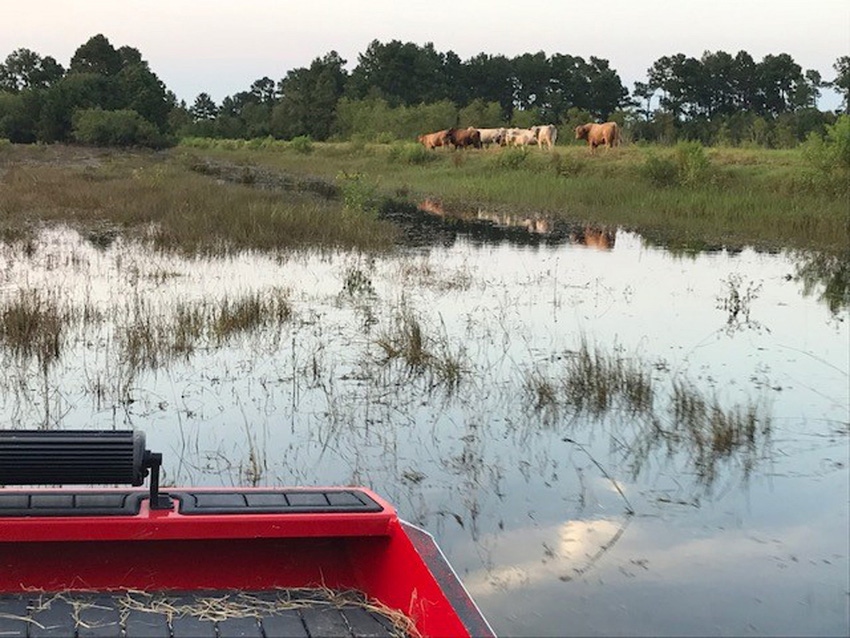Bill includes $3.8 billion for disaster recovery from hurricanes, wildfires and crop losses and adds cotton and dairy farm bill fix.

The House is poised to provide added disaster assistance, offering an additional $81 billion in emergency assistance to those affected by recent hurricanes, wildfires and related agricultural losses and also offering provisions to assist cotton and dairy producers ahead of the next farm bill.
On Monday, House Appropriations Committee chairman Rodney Frelinghuysen (R., N.J.) introduced a bill to provide the additional emergency assistance for recent hurricanes, wildfires in California and related agricultural losses. The bill, H.R. 4667, targets funds to programs to continue relief and recovery efforts in all of the affected communities, including in Texas, Florida, California, Louisiana, Puerto Rico and the U.S. Virgin Islands.
“This legislation is the next step in helping our fellow Americans recover from multiple, back-to-back, devastating disasters, including some of the largest major hurricanes, wildfires and agriculture losses this country has ever seen,” Frelinghuysen said.
If passed, it would bring total disaster aid approved this year to a record $132.75 billion, surpassing the total amount of aid after both hurricanes Katrina and Sandy.
The bill specifically allocates $3.8 billion to the U.S. Department of Agriculture for disaster recovery from hurricanes, wildfires and crop loss. This includes $2.6 billion for agriculture disaster assistance, including related crop and livestock losses in disaster designated zones.
Florida growers will be able to tap into this dollar amount. In the wake of Hurricane Irma, Florida commissioner of agriculture Adam H. Putnam announced that Florida agriculture sustained more than $2.5 billion in damages. In the weeks following Hurricane Irma, Putnam joined Gov. Rick Scott in Washington, D.C., to discuss the agricultural damage and to request federal assistance with Florida’s congressional delegation.
“Florida’s farmers, ranchers and growers suffered unprecedented damage from Hurricane Irma, and the announcement of proposed emergency funding for Florida agriculture is the first bit of good news we’ve heard in months,” Putnam said in a statement following the bill’s introduction.
The bill provides $541 million for watershed and flood prevention efforts, $400 million for emergency conservation efforts to mitigate future disaster risks and $165 million for repairs and mitigation for rural and waste disposal systems.
It also provides $12.1 billion to the Corps of Engineers to conduct repairs needed due to natural disasters and to expedite studies and projects to reduce damages in future disasters in areas affected by recent hurricanes. Specifically, $370 million is allocated for repair damages along the Mississippi River and its tributaries.
“As we move forward, we will continue to monitor recovery efforts and will stand side by side those victims to ensure that they have what is required to regain their livelihoods and rebuild their communities,” Frelinghuysen said.
Farm bill fixes
House Republicans inserted provisions in the House disaster bill to lift the cap on the Livestock Gross Margin insurance to offer some short-term assistance for dairy producers who have been unhappy with the dairy Margin Protection Program.
The disaster package also would make cotton growers eligible for the Price Loss Coverage (PLC) program. The last farm bill created an insurance program that was not well-received by cotton growers and hasn’t provided the desired safety net. The PLC reference price would be set at 36.7 cents/lb. for “seed cotton,” which is defined as “unginned upland cotton that includes both lint and seed.”
The proposals may face opposition in the Senate, where an appropriations bill previously attempted to offer assistance for cotton producers but did not offer enough for dairy producers.
House Agriculture Committee chairman Mike Conaway (R., Texas) continues to blame Senate Agriculture Committee chairwoman Debbie Stabenow (D., Mich.) for stonewalling his attempts during the last omnibus spending bill discussions to include a fix for cotton.
By making adjustments during the appropriations process, the House and Senate agriculture committees won’t have to offset spending increases when working with the baseline of the farm bill. The seed cotton provisions are not expected to add any costs to the disaster bill as no payments are expected expected in fiscal 2018, reports indicated.
The House proposal offsets part of the costs of the changes by initiating nutrition infrastructure reforms.
The National Farmers Union said it supports "comparable, meaningful changes for each industry yet remains opposed to farm programs being pitted against nutrition programs."
About the Author(s)
You May Also Like



.png?width=300&auto=webp&quality=80&disable=upscale)

